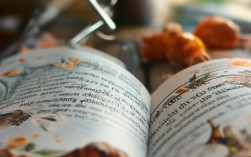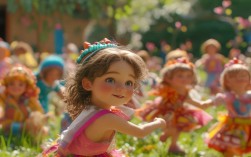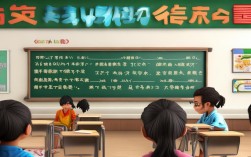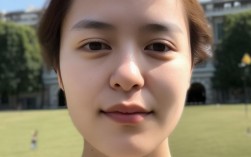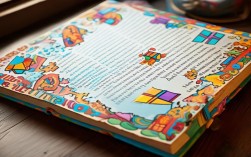英语版春节趣事来啦!小明用英文给长辈拜年,逗得全家大笑,红包上写着“Happy New Year”,传统与英语碰撞出欢乐火花✨,让节日氛围更国际
遥远而又充满奇幻色彩的东方小镇——桃源村,每年春节都是孩子们最翘首以盼的日子,这个村庄有个特别的传统:用英语讲述趣味春节故事,既锻炼了大家的英语口语能力,又让古老的节日习俗披上了国际化的新衣,今年也不例外,村中央的大槐树下聚集了一群兴奋不已的孩子和他们的家人,准备聆听一场别开生面的“英语趣味春节故事会”。

《The Legend of the Red Envelope (红包传奇)》
Once upon a time, in the heart of China, there lived a wise old man named Hong Bao Lao Ren (Red Envelope Old Man). He wasn't really old in age but was called so because he gave out countless red envelopes filled with lucky money during Spring Festival. These weren't just any envelopes; they were decorated with golden dragons dancing amidst clouds, symbolizing good fortune and prosperity.
One year, a curious little boy named Xiao Ming asked why they used red paper for the envelopes. The old man smiled and said, "Red scares away evil spirits and invites happiness into our homes." To prove his point, he took out three special envelopes – one white, one black, and one red. Placing them on the ground, he invited everyone to watch as only the red one attracted friendly creatures like butterflies and birds, while the others remained untouched by even insects. From that day on, everyone understood the power of red and continued the tradition with even more joy.
| Color | Meaning | Outcome When Placed Outdoors |
|---|---|---|
| White | Mourning/Sadness | Attracted no living beings |
| Black | Misfortune | Kept all creatures at bay |
| Red | Luck & Happiness | Drew beautiful birds and butterflies |
《The Dance of the Lanterns (灯笼之舞)》
As night fell on New Year's Eve, the sky transformed into a canvas painted with fireworks exploding like stars falling to earth. But among all these spectacular sights, nothing captured hearts quite like the Lantern Dance. Families gathered around huge paper lanterns shaped like animals – dragons soaring high, phoenixes spreading their wings wide open, rabbits hopping playfully... Each lantern had its own story told through intricate cuts and paintings.
A foreign friend visiting from afar named Emily joined in. She tried her best to mimic the graceful movements taught by Grandma Li, who led the dance every year. At first, her steps were clumsy, causing laughter among some kids. However, encouraged by cheers from everyone present, she soon got the hang of it. By midnight, Emily was spinning circles alongside local children under moonlit skies, her laughter mingling with traditional music played by villagers on erhu and pipa. It was then that magic happened: all lanterns seemed to come alive, swirling around her as if celebrating her newfound skill.
《Dumplings That Sing (会唱歌的水饺)》
No Chinese New Year feast is complete without dumplings! In peach Blossom Valley where lived Chef Zhang, making dumplings was an art form passed down through generations. What made his creations extraordinary? Well… legend has it that when boiled just right, those dumplings would hum tunes resembling ancient folk songs!
Curious townsfolk often gathered outside his kitchen door hoping to catch a glimpse of this marvel. One brave soul, Jack Thompson from England, decided to learn how to make such musical morsels himself. Under Chef Zhang’s guidance, Jack learned not only how to fold delicate pleats onto dough but also discovered secrets behind achieving perfect harmony between filling ratios and cooking times. On the final day before Lunar New Year arrived, Jack proudly presented his first batch – lo and behold! As steam rose off boiling water, faint melodies emerged… starting low notes then climbing higher until reaching joyous crescendos! Everyone clapped enthusiastically; even non-Chinese guests marveled at this culinary wonder.
相关问答FAQs
Q1: Why do Chinese people give red envelopes during Spring Festival? A1: Giving red envelopes (hongbao) stuffed with money is believed to bring good luck and protect against evil spirits according to ancient beliefs. The color red itself symbolizes joy, celebration, and warding off negativity. It's also seen as a gesture of blessing for recipients, especially children or elders.
Q2: How did the tradition of hanging lanterns originate? A2: Historically, hanging lit lanterns outdoors originated as a way to guide wandering souls back to their homes after dark during winter solstice periods. Over time, it evolved into a festive custom associated with brightness dispelling darkness metaphorically representing hope overcoming despair. Today, colorful designs add beauty to celebrations worldwide.
Through these enchanting tales woven together with English words and phrases, the children of Peach Blossom Village not only improved their language skills but also deepened their appreciation for cultural heritage. And thus, another chapter in their bilingual journey came full circle – proving once again that stories have the incredible ability to bridge worlds across

